How to Grow Rhubarb Like a Pro Farmer for Big Harvests
Author: Jen Worst | Editor: Omar Alonso
Review & Research: Jen Worst & Chris Miller
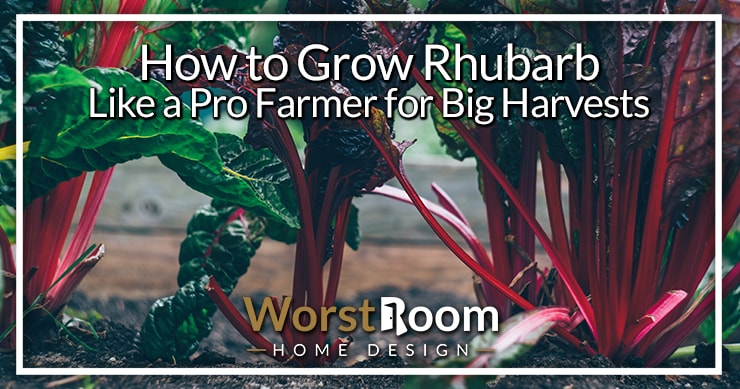
Learning how to grow rhubarb is a simple task. The only challenge is the discipline it takes to plant, water, and harvest at the right times. Other than that, it's super simple and we'll show you how.
Rhubarb grows during the winter months and is usually found in Northeast Asia, Northern Europe, and North America. This vegetable isn't used in its entirety. Only the stalk is eaten and used in dishes.
The stalk is sour and is usually cooked in sugar. Some common recipes made using rhubarb are pies, jams, crumbles, tarts, wines, cocktails, and it also tastes great with strawberry. All the more reason for growing rhubarb, if you ask me.
As we said, this is a very different type of vegetable. It's perennial and hardy. This means you can grow them without too much trouble, and every other spring, you can enjoy them in bulk thanks to a massive harvest.
These are mostly harvested around strawberry season, and coincidentally enough, they both taste remarkable together. So plant your rhubarb in any corner of your garden and enjoy its bounty every spring season. Stay away from the foliage, though; they're bad for you.
Here is a comprehensive guide for you if you are interested in planting rhubarb and having plenty of it to work into countless dishes in the kitchen.
How to Grow Rhubarb
Let's walk through, step-by-step, the process of planting, growing, caring for, and harvesting delicious rhubarb from your own garden.
Rhubarb Growing Conditions
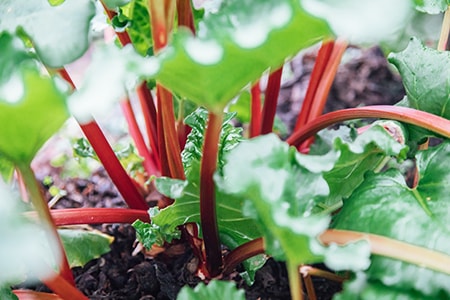
Rhubarb usually grows well in the temperature from 39 to 75 degrees Fahrenheit in winter, spring, and summer. Though it can be ripe in the spring and summer, it's not likely to be fully mature and ready until the fall season.
When planting rhubarb you need to check that there are no other perennial weeds already thriving in the area you are planning to use. Pull those weeds up or they'll compete with your rhubarb for nutrients.
People usually use rhubarb crowns that are almost one year old. These crowns are mature plants that are established enough to resist pests, disease, and harsh weather. Seeds are also used, but if you are a beginner level gardener, then sticking to using crowns is best.
How to Plant Rhubarb
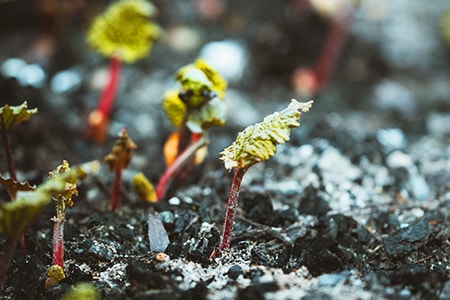
To prepare the ground before planting rhubarb, make sure that the soil is able to drain well first. You don't want to deal with root rot and other issues associated with standing water, below or above ground.
Till the soil under with organic matter, whether that's compost or fertilizer in general. You should add in aged manure a few weeks before planting your crop. If you have a way of measuring the nutrient content of the soil, you can then balance it perfectly by mixing up the perfect fertilizer numbers.
Though we're not there yet, since we brought up water I want to mention that the crop needs to be watered daily in dry seasons like summer and autumn, while mulch is added annually to help refresh the soil's nutrient contents. Nutrition and hydration are hugely important parts of how to grow rhubarb, more so than other plants.
The rhubarb plant likes to have its own space, so they need to be planted in a spacious area so they can be spread out. Ensure that each crown is planted between 1 to 2 inches deep in the soil and ensure they're at least 4 feet apart (yes, four feet, that's not a typo).
You also want to make sure they receive plenty of sun, so don't plant them within the shade of other taller plants just because you have space in between. Don't take any shortcuts!
When planting rhubarb, you want to dig out pretty sizable holes, taking about a bushel of soil out of the ground for each plant. Dig wider and deeper than you think you should for such a currently tiny plant.
Mix that soil in with your compost, manure, and/or fertilizer and refill the holes with this mixture. Don't pack it in too densely, because you want it to be able to drain well.
Now plant the crowns 1 to 2 inches deep in the soil so that the buds are situated slightly above the ground. Rhubarbs need plenty of organic matter, so pack the top of the soil with more of your compost and manure.
They will grow well when they're fed in this way, and as a matter of fact, they demand it to thrive and provide a maximum harvest. Beware of chemical fertilizers, though. Remember that you'll be eating these eventually, so keep it organic.
When to Plant Rhubarb
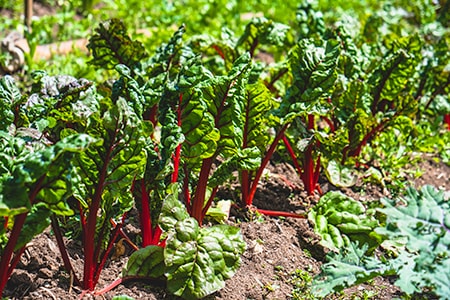
Planting rhubarb should be performed any time during late winter or early spring, as long as the soil is workable and not frozen. You want to make sure there won't be another serious frost as well. A light frost in early spring is fine.
Technically, if you live in an area with mild winters, you can get away with planting your rhubarb crowns in the late fall once you know the plants have become dormant.
That's the key to how to grow rhubarb: avoid temperatures below 39 degrees Fahrenheit and make sure the plants are dormant, meaning the growth phase hasn't begun. The roots should not be seeking to expand nor should the leaves be having a fast growth spurt.
Rhubarb Care
Rhubarb doesn't require too much attention. Once you have planted the crowns, you can go on eating them every year for as many as 20 years as long as they stay healthy.
You should, however, make sure that the soil remains fertile and mulch it with straw and manure. You should also use a high nitrogen fertilizer (that means no 0-20-20 fertilizer) like a 10-6-4 or even a 25-3-3 fertilizer.
They're heavy feeders, so keep the nutrients coming and don't let the roots dry out. Be mindful of this in the summer especially.
Another important thing is to look out for any other weeds that might be present. Rhubarbs don't usually get any diseases, but if there are weeds around, they may become susceptible due to being weakened by competing for food.
When you experience the first spring frost in your region, remember to sprinkle high nitrogen-containing fertilizer on the crop. This is done when the ground is thawed, or in the process of thawing, it will help the roots and maintain their growth plan.
The roots and bulb of the rhubarb plants should be dug out of the ground and split in half every 3 years, or 4 years at the latest. It's preferable to do it when the plant is in its dormant condition, typically in late winter, early spring, or during the fall.
When to Harvest Rhubarb
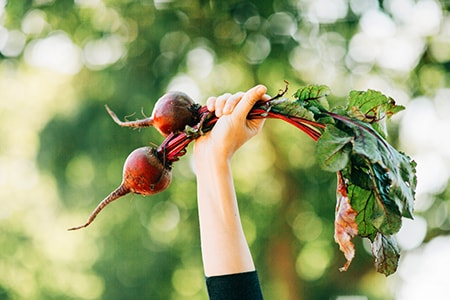
Rhubarb stalks should be left un-harvested for the first growing season; this helps them in further establishing a mature root network. Though it may be tempting, harvesting during this first year puts your entire crop at risk and may cause them to produce smaller harvests in later years.
After this first year, you're free to begin harvesting the stalks. You should wait until they range between 10 and 18 inches in length, which ensures the timing is right. This is a key part of how to grow rhubarb, which is waiting and letting them do their thing.
After three years, the harvest window extends to upwards to 10 weeks so the timing isn't that critical later on. But pay attention and make sure the stalks aren't becoming frail and thin.
If that's the case, leave them alone and make sure to provide more fertilizer since this means they're running low on nutrients. You have to keep their own food reserves up if you plan on them being a part of yours.
To harvest the stalks, pull at the base of the stalk lightly while twisting and they should snap off cleanly, or you can also cut the stem at the bottom with garden shears.
It's recommended to leave at least two stalks per plant so that the plant doesn't die entirely, thus ensuring future production. If you do this right, they can produce for you for as many as 20 years into the future.
As the harvesting time comes to an end and a return to dormancy happens, you'll see that the stems will dry up and die off on their own. Now your job is to clear off the remains and put plenty of mulch on top of your crop to restore the nitrogen contents in the soil.
By doing this, you are ensuring a good spring harvest. Cover your rhubarb plant well during winter with nitrogen-rich fertilizer and mulch. Wait till after the first freeze before doing this.
How to Store Rhubarb
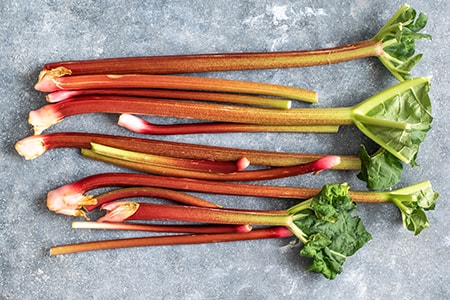
Rhubarb is best when it's freshly hand-picked, but we can't use it all up that fast either. So we have to store it in some fashion. You can freeze Rhubarb raw or you can also cut them in pieces before freezing or refrigerating.
Fresh rhubarb is used in many dishes, and the best is in pies. If you don't want to make sugary food with it you can make a tasty salad, and it's also an excellent ingredient for oatmeal. Whatever you can't use needs to be frozen or refrigerated.
You should go ahead and trim off any rotting or bruised parts of the stalk and wash it. If you don't do this you'll find that it dries out for too quickly and becomes limp. Don't seal them off in zip-lock bags because it traps ethylene in the bag and causes it to ripen even quicker.
The best move is to wrap it loosely in tin foil. Don't crimp it down tight, because you want some air flow, but you do want it tight enough that all the stalks are snugly wrapped next to each other. This helps resist drying out too quickly.
This method tends to help fresh rhubarb last for around two weeks or a little longer on average.
Disease Found in Rhubarb
Crown Rot – This disease is caused by a species of fungus called Phytophthora. It is present in the soil and affects not only the crown but also its roots and stalks.
This results in the wilting of the stalks that eventually causes the plant's death entirely. There's no sure remedy for it, but if you are keeping weeds out of your garden and using mulch regularly, then your plant is free from the risk, simply by being healthy and resistance.
There are not many problems associated with growing rhubarb, but if you see spider mites on your plant, just use neem oil. Spray the neem oil twice every week. It works as an organic insecticide by coating the leaves (make sure you spray the underside too). Don't be left wondering where did these spider mights come from?
Types of Rhubarb
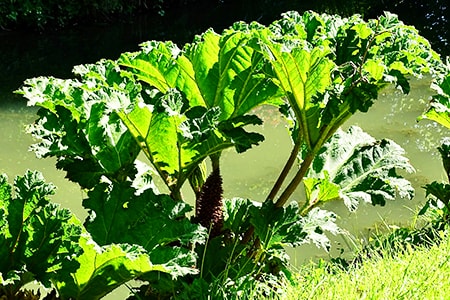
There are different kinds of rhubarb available for your use, including:
- Timperley Early – this is one of the varieties of rhubarb that you can harvest the earliest.
- Stockbridge Arrow – the leaves are shaped like arrow leaves. They're a sweeter variety.
- Cawood Delight – this is a comparatively new variety. The stalks are of excellent quality, but the yields are low.
- Victoria – this the most well-known variety, and you can always grow them reliably.
While there are other types out there, these are the varieties that you'll encounter. You'll most likely settle on Victoria rhubarb like most of us do thanks to their ease of growing and dependability of harvest quantity.
That's How to Grow Rhubarb
No matter how new to gardening you are, rhubarb is one of the most low-maintenance plants to grow. You just have to plant them one time, and if maintained well, you can enjoy the stalks for the next 20 years.
It's one of those vegetables that don't need too much seasonin when cooked, since they have a natural tangy and sweet taste to them. They're great in sweet dishes like pies, tarts, and the best of all, crumbles. But you can also utilize them in salads.
Learning how to grow rhubarb is very rewarding, not only in your heart and mind but in your garden and kitchen.



